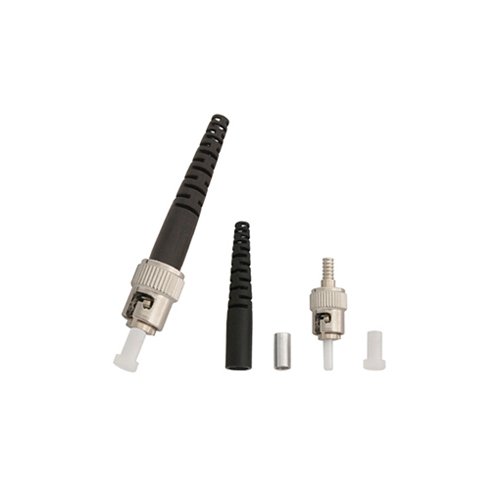- +1 (510) 365-3338
- +1 5103653338
- evan@commmesh.com
- +86 15274842581
You need a reliable fiber connection. The ST connector provides secure links. It uses a 125µm cladding diameter. Observe its 2.5 mm O.D. zirconia element. This has a 0.9µm tight buffer design.
Its features contain nickel body parts. Note the 8-32 UNEF thread. The product ensures 0.2dB insertion loss. See the 500 Mating Cycles component. It works in -40°C to 85°C environments.
You get a 9/125 core. Look at the Ø0.25mm aperture size. It presents 15 N tensile strength. Observe its simplex configuration setup. Note its 1310nm to 1550nm range.
The spring-loaded mechanism can be used by you. The housing measures 2.6mm. Notice its outer element length, 46.5 mm. This exhibits a twist-lock mount.
Keep in mind what you need from a secure connection at first. This ST connector utilizes a special twist mechanism. Observe its two pins, each 0.5mm. Notice these move within two slots. These are 1mm wide each. The locking force equals 20 pounds. This ensures strong fiber optic links. These are used on patch panels.
This ST connector uses a precise element. It is made from an engineered material. It is 10 millimeters in length. The outside diameter is 2.499 millimeters. Note its internal hole. It holds fibers tightly. This enables data transfer on modules. You find these in electronic equipment.
The ST connector is perfect for various light paths. A glass core has 50-micron width. This permits different signals to journey. It has a jacket measuring 3 millimeters. They link devices. The typical data rate is 1 gigabit per second. You connect devices within 550 meters.
Utilize this ST connector type to transmit one light path. Its thin 9-micron core enables focused signals. The component functions well within 10-kilometer distances. This is valuable for telecommunications. Your data rates will exceed 10 gigabits. They are common for data center backbone or distribution frame.
Choose the ST connector style from the link. One channel uses a simplex model. It sends data in a single direction. For a two-way communication, choose duplex. The form needs two fibers, side by side. The duplex design uses 6.4-millimeter by 3.2-millimeter size.

| Feature | Specification | Product 1 (Assembled) | Product 2 (Kit) | Industry Standard |
| Connector Type | ST (Straight Tip) | ST/PC | ST | ST |
| Polish Type | Physical Contact (PC) | PC | PC-Ready (field polishable) | PC, UPC, APC |
| Ferrule Diameter | 2.5 mm | 2.5 mm | 2.5 mm | 2.5 mm |
| Fiber Type | Multimode | Simplex Multimode (likely OM1, OM2, OM3, OM4) | Multimode Compatible | MM (OM1-OM5), SM (OS1-OS2) |
| Cable Diameter | 2.0 mm | 2.0 mm jacket | Accommodates up to 2.0 mm | 0.9 mm – 3.0 mm |
| Boot | Black, Tapered, Strain Relief | Included | Included | Varies |
| Ferrule Material | Ceramic (Zirconia) | Zirconia | Zirconia | Zirconia, Stainless Steel |
| Mating Cycle | 500-1000 | 500-1000 | 500-1000 | 500-1000 |
| Operating Temperature | -40°C to +75°C | -40°C to +75°C | -40°C to +75°C | -40°C to +85°C |
| Wavelength | 850nm, 1300nm | 850nm, 1300nm | 850nm, 1300nm | 850nm, 1300nm, 1310nm, 1550nm |
Cleaning regularly is important for best use. You should use a special cleaning swab for the fiber's tip. The swab should have 99% isopropyl alcohol. The ferrule end-face is 2.5mm. So, wipe the ST connector tip once, gently removing any dirt.
Dust caps should always be on when not in use. Caps are about 5mm wide. Also, the cap protects the shiny part. But, put a new cap on if it is broken. Since, hands off the shiny tip!
Handling the connector body is the best way to hold it. Because the body is about 46.5mm long. For instance, never touch the end part. As well as, keep unused ones in a clean, dry spot with an anti-static bag.
Inspecting for damage is something to do now and then. While the bayonet needs to work smoothly, its locking force is 20 pounds. Furthermore, look at the fiber tip for scratches, using a special tool. Then, if worn out, get a new ST connector; ensuring good signals.
Quick Contact
To save your time, please contact us quickly via the form below to get an instant quote.
